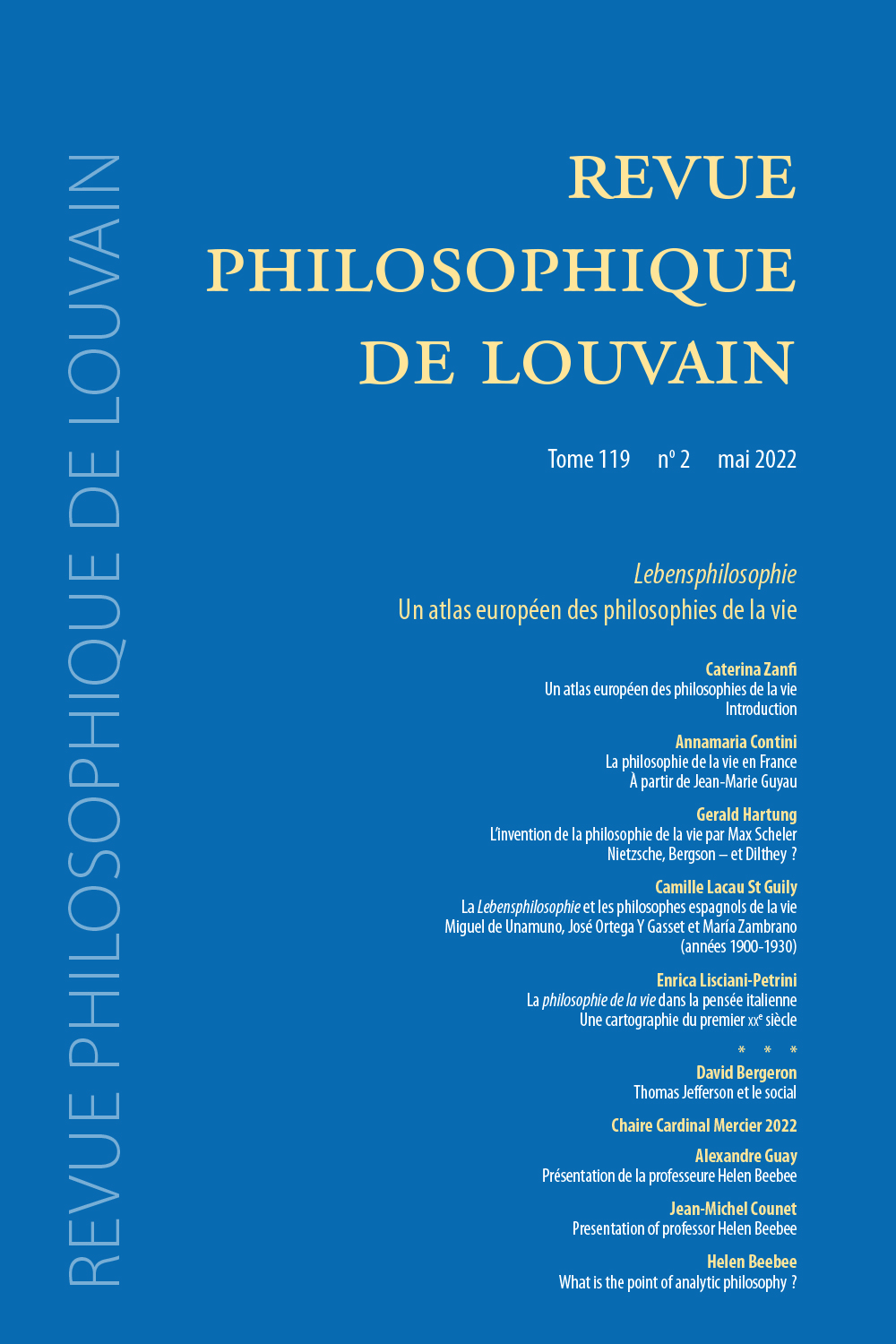 previous article in this issue previous article in this issue | next article in this issue  |

Preview first page |
Document Details : Title: Onto-rythmie Author(s): LINDBERG, Susanna Journal: Revue Philosophique de Louvain Volume: 108 Issue: 3 Date: août 2010 Pages: 527-548 DOI: 10.2143/RPL.108.3.2056223 Abstract : Cet article est une interprétation de la pensée de Philippe Lacoue-Labarthe à partir d’une hypothèse sur l’être comme rythme qui, sans être explicitement sienne, soutient sa pensée. Interprétant le rythme comme schème et non pas comme flux, Lacoue-Labarthe partage d’emblée la position de Heidegger. Il s’en écarte néanmoins dans la mesure où, contrairement à Heidegger, il ne renvoie pas le rythme à la conception aristotélicienne de la forme eidétique. Pour Lacoue-Labarthe, le rythme serait au contraire une forme temporelle et mobile, capable de défaire les formes et les figures stables. Définissant le rythme en fonction de la mimèsis, il produit un effet critique sur les conceptions heideggériennes de l’éthos humain, de la tonalité affective du monde, et de l’oeuvre d’art. This article is an interpretation of the thought of Philippe Lacoue-Labarthe setting out from a hypothesis of being as rhythm, which, without being explicitly his, supports his thought. Interpreting rhythm as schema and not as flux, Lacoue-Labarthe from the start shares Heidegger’s position. He departs from it, however, to the extent that, unlike Heidegger, he does not refer rhythm to Aristotle’s concept of eidetic form. For Lacoue-Labarthe rhythm, on the contrary, is a temporal and mobile form, capable of disintegrating stable forms and figures. By defining rhythm in reference to mimesis, he produces a critical effect on Heideggerian conceptions of the human ethos, of the affective tonality of the world and of the work of art. |
|


